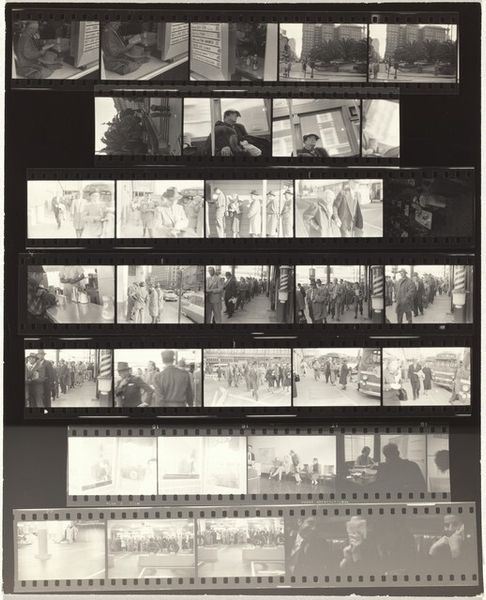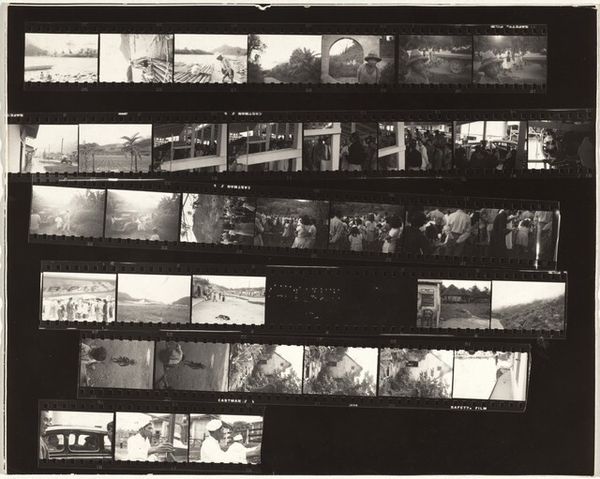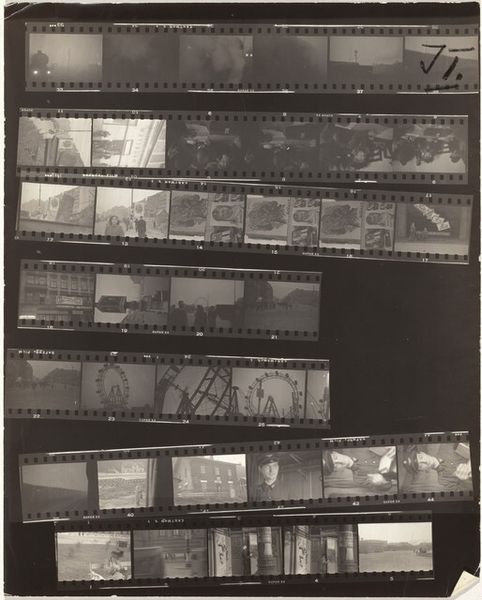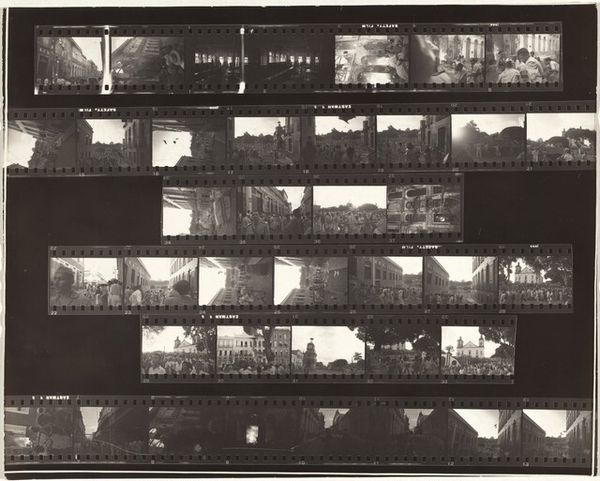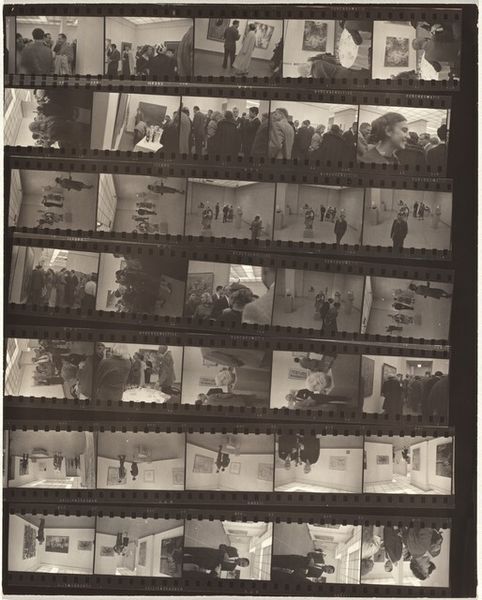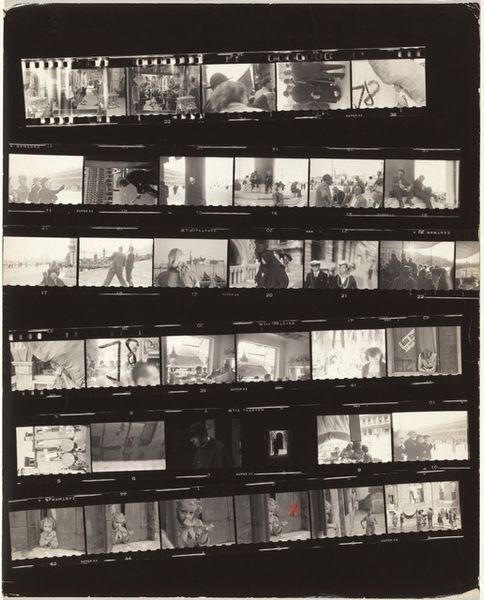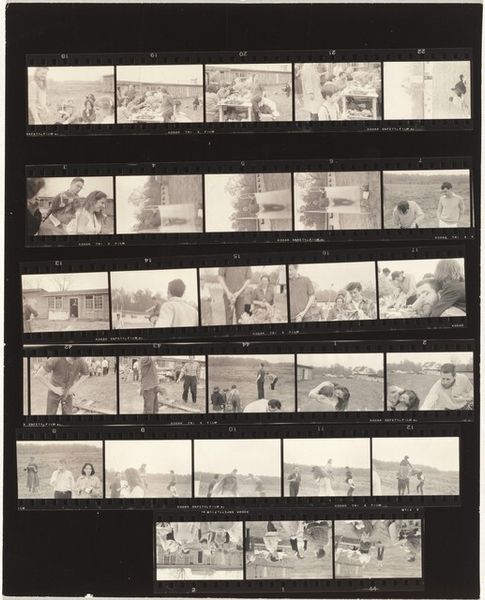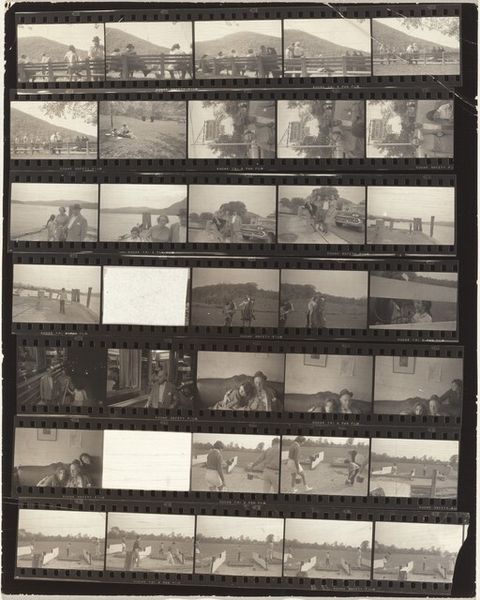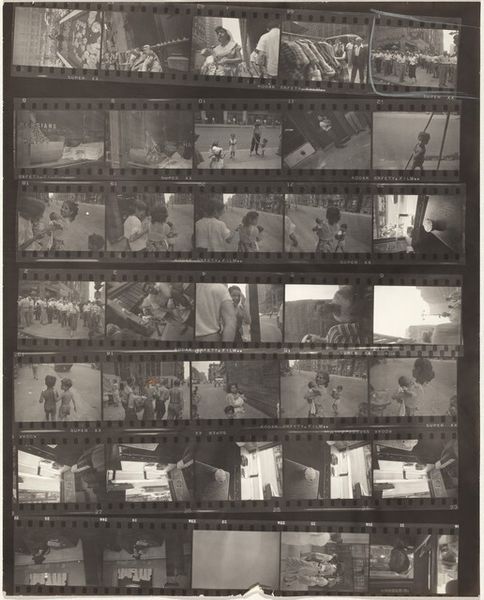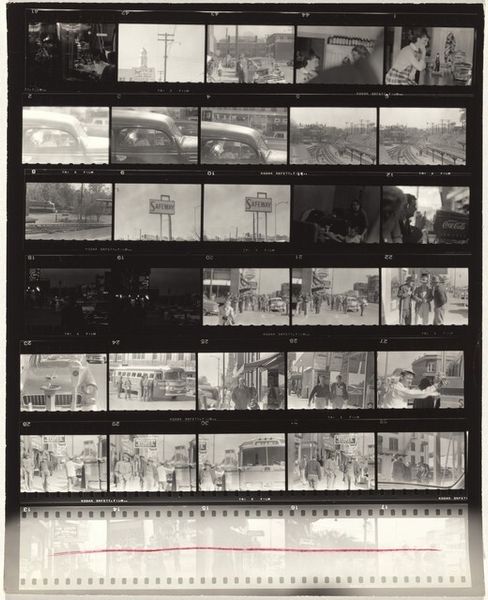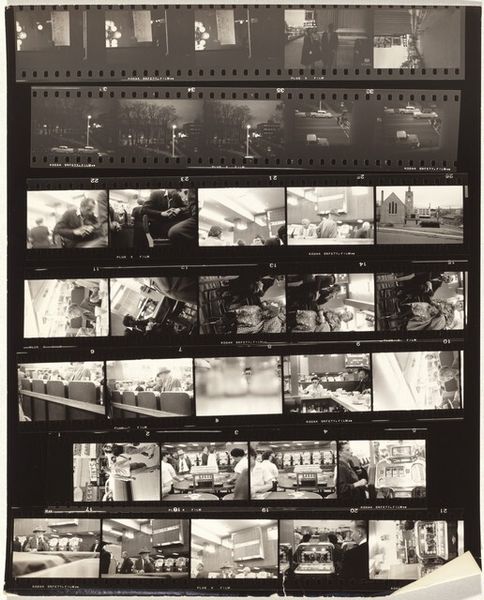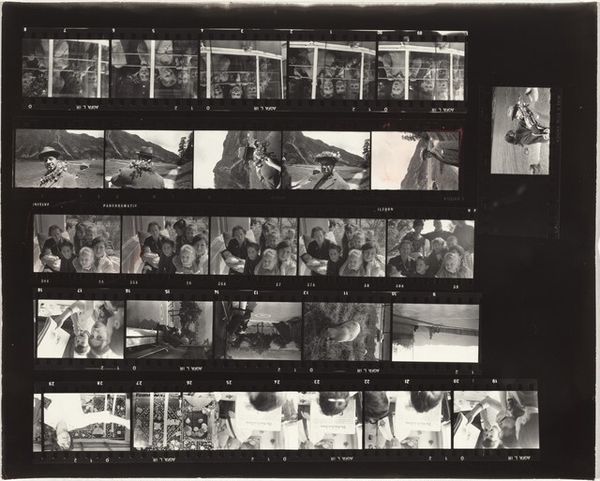
Dimensions: overall: 23.9 x 29.9 cm (9 7/16 x 11 3/4 in.)
Copyright: National Gallery of Art: CC0 1.0
Curator: This intriguing piece is Robert Frank's "Switzerland no number," a gelatin-silver print dating from 1959. My immediate reaction is a sense of layered observation. It's almost voyeuristic, peering into these captured moments of Swiss life. Editor: That's an interesting take. For me, it’s all about process and presentation here. We're not just looking at a finished photograph, but strips of negatives, the raw material of image-making itself. It brings the whole labor and technology involved into the frame. Curator: Yes, but consider the formal elements at play! The contrast between light and shadow in each frame creates a distinct rhythm across the strips. There's a structural integrity even in this seemingly casual arrangement of negatives. Editor: I agree about the visual rhythm, but the 'casual arrangement,' as you call it, suggests something more significant. The very act of selecting, cropping, and presenting these negatives… that's all part of the artist's conscious manipulation, reflecting a broader social commentary. These negatives give insights into the editing, and thought process behind Robert Franks work in general. Curator: Broad social commentary? Perhaps, but I think it speaks more to the transient nature of reality itself. Each captured frame is a frozen fragment, a moment sliced from the continuum of experience. Look at how some frames bleed into darkness, emphasizing this sense of ephemerality. Editor: Ephemerality is certainly present. But isn’t Frank, through his methodology, hinting at the social dynamics inherent in capturing these everyday Swiss lives? Who has the power to record, to represent, and how are those representations consumed? And here, by showing the negatives, we gain an understanding of his selection bias as the photographer. Curator: It is interesting to examine the way Frank captures groups of individuals within these frames. We are able to glimpse their reactions, emotions, and how they relate to their community and surroundings. Editor: Frank has opened up this view of Switzerland to scrutiny in ways the traditional presentation of final photos simply could not do. We see the making of meaning as it happened. Curator: Perhaps both perspectives are valid, that his decisions are both an insight into production and presentation. It certainly sparks an idea about photography's ability to freeze reality. Editor: Exactly! A process of material capture, and an examination of material itself, forever connected.
Comments
No comments
Be the first to comment and join the conversation on the ultimate creative platform.

